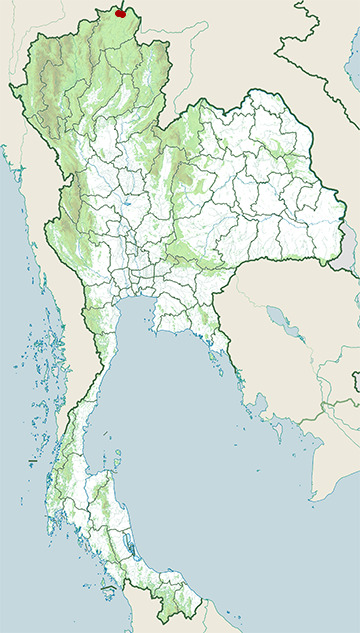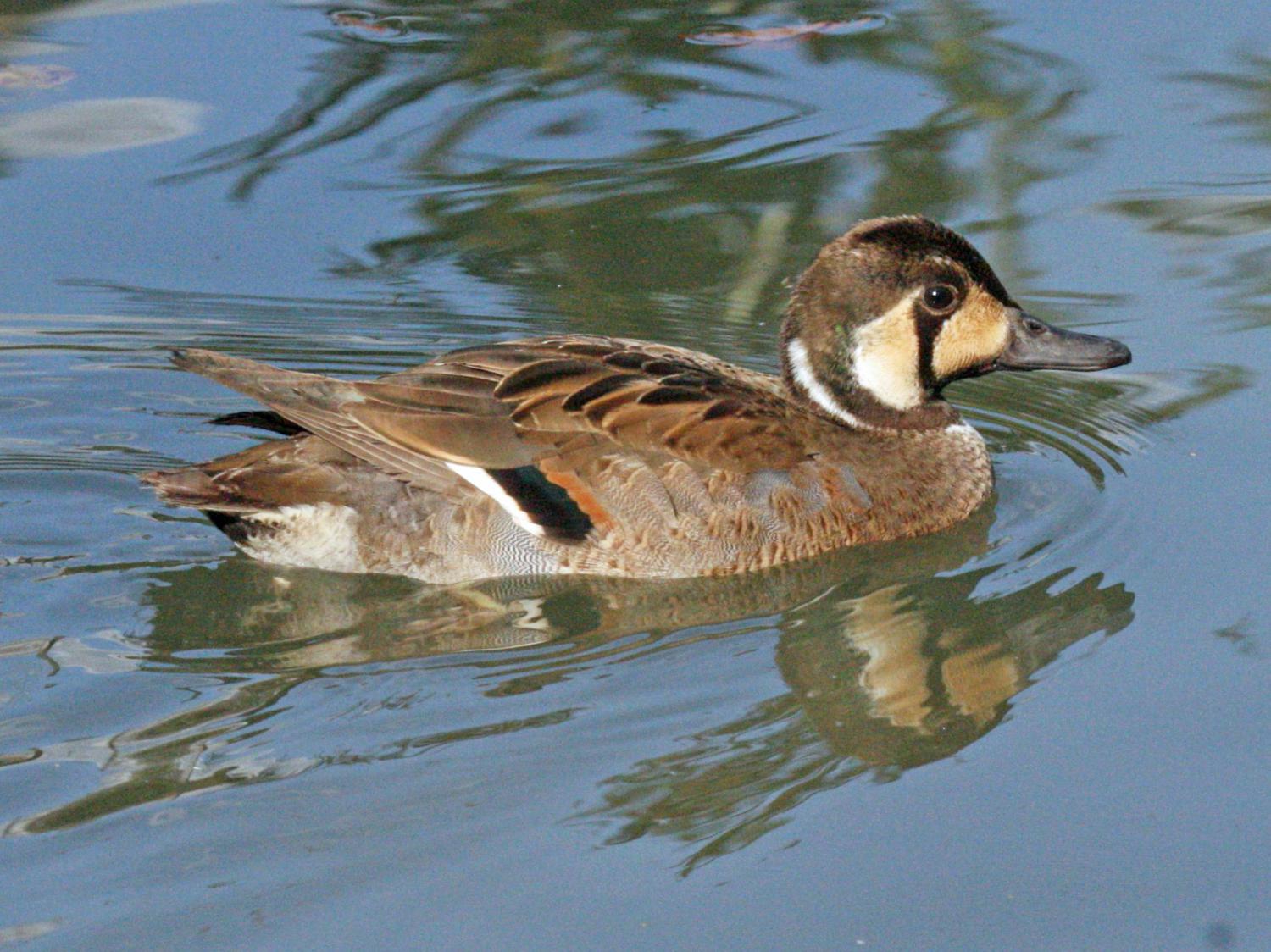Species of Thailand
Baikal teal
Sibirionetta formosa
Johann Gottlieb Georgi, 1775
In Thai: เป็ดเปียหน้าเหลือง
The Baikal teal (Sibirionetta formosa), also called the bimaculate duck or squawk duck, is a dabbling duck that breeds in eastern Russia and winters in East Asia.
Taxonomy
The first formal description of the Baikal teal was by the German naturalist Johann Gottlieb Georgi in 1775 under the binomial name Anas formosa. A molecular phylogentic study published in 2009 found that the genus Anas as then defined was non-monophyletic. Based on this analysis the genus was split into four proposed genera with the Baikal teal placed in the resurrected genus Sibirionetta that had been introduced by the German zoologist Hans von Boetticher in 1929. The name Sibirionetta is derived from the Latin sibiricus for Siberia and the Ancient Greek nētta for a duck. The specific epithet formosa is from the Latin formosus for "beautiful".
Description
At between 39 and 43 cm, this duck is slightly larger and longer-tailed than the common teal. The breeding male is unmistakable, with a striking green nape, yellow and black auriculars, neck, and throat. It has a dark crown, and its breast is light brown with dark spots. It has long dropping dark scapulars, and its grey sides are set off on the front and rear with white bars.
The Baikal teal has a height from 11.75 to 15.75 inches and a weighs an average of 1 pound.
The female looks similar to a female green-winged teal but with a longer tail, and a distinctive white spot at the base of the bill and a white throat that angles to the back of the eye. She also has a distinct light eyebrow bordered by a darker crown. The underwing is similar to the Green-winged Teal also, but has a darker leading edge. The green speculum has an indistinct cinnamon-buff inner border. Some "females" have "bridle" markings on their faces, but it has been suggested that at least some of these bridled "females, " if not all, are in fact juvenile males. The juvenile has a plumage similar to that of the female and can be distinguished from the Common Teal by the pale loral spot.
In non-breeding (eclipse) plumage, the drake looks more like the female, but plumage is a much richer reddish-brown (rufous) colour.
Distribution and habitat
It breeds within the forest zone of eastern Siberia from the Yenisey basin eastwards to Kamchatka, northern Koryak, eastern Magadan Oblast, northern Khabarovsk Krai, southeastern and northern Sakha east central Irkutsk Oblast, and northern Krasnoyarsk Krai. It is a migratory species, wintering in South Korea, Japan, Taiwan, northern and eastern China, from Beijing down the coast to the Vietnam border, and west to Yunnan then north to Chongqing and Henan.
It breeds in pools on the tundra edge and within swampy forests. In winter it is found on lowland fresh waters.
Status
This species is classified as Least Concern on the IUCN Red List, though it was classified as Vulnerable before 2011 due to hunting and destruction of its wintering wetland habitats. These threats remain, but the Baikal teal is recovering, with increased numbers of wintering birds and some increase in habitat area. Based on the numbers of Baikal teal counted wintering in South Korea, the global population is estimated to be around 1.07 million individual adults around 2010, a major increase from the tens of thousands counted in the 1980s and few hundreds of thousands in the 2000s.
This article uses material from Wikipedia released under the Creative Commons Attribution-Share-Alike Licence 3.0. Eventual photos shown in this page may or may not be from Wikipedia, please see the license details for photos in photo by-lines.
Category / Seasonal Status
Wiki listed status (concerning Thai population): Accidental
BCST Category: Recorded in an apparently wild state within the last 50 years
BCST Seasonal status: Non-breeding visitor
Scientific classification
- Kingdom
- Animalia
- Phylum
- Chordata
- Class
- Aves
- Order
- Anseriformes
- Family
- Anatidae
- Genus
- Sibirionetta
- Species
- Sibirionetta formosa
Common names
- Thai: เป็ดเปียหน้าเหลือง
Synonyms
- Sibirionetta formosa , Johann Gottlieb Georgi (1775)
- Sibrionetta formosa
- Nettion formosum
- Nettion formosa
- Anas formosus
Conservation status

Least Concern (IUCN3.1)
Photos
Please help us review the bird photos if wrong ones are used. We can be reached via our contact us page.
Range Map

- Chiang Saen District, Chiang Rai
- Nong Bong Khai Non-Hunting Area

